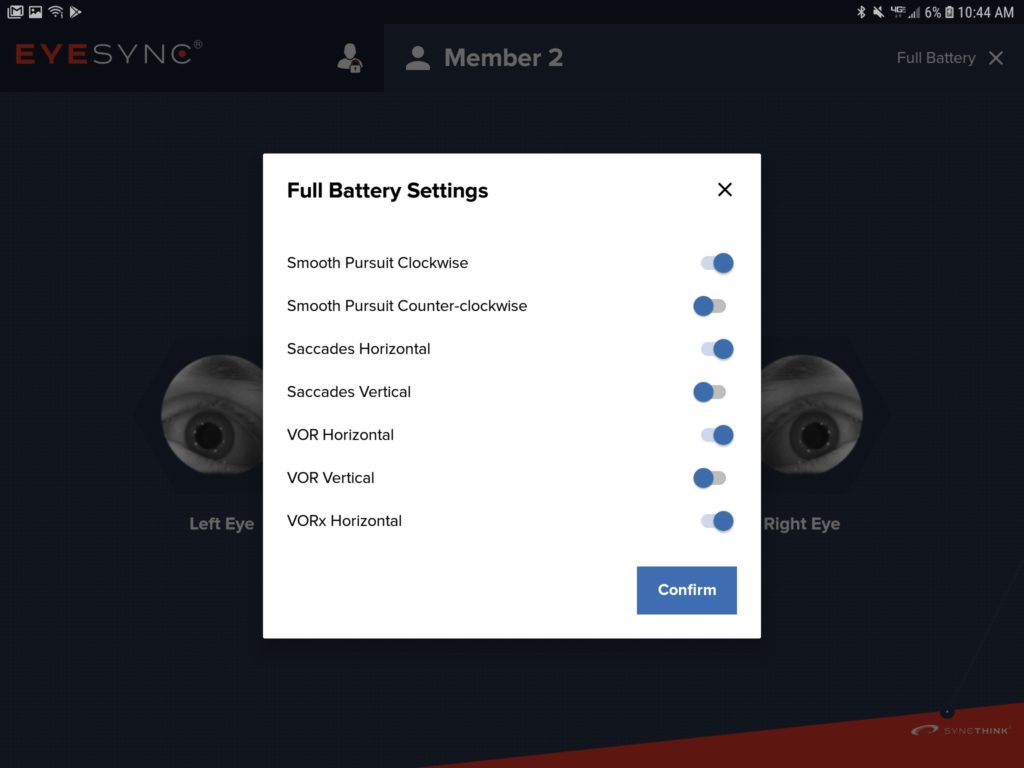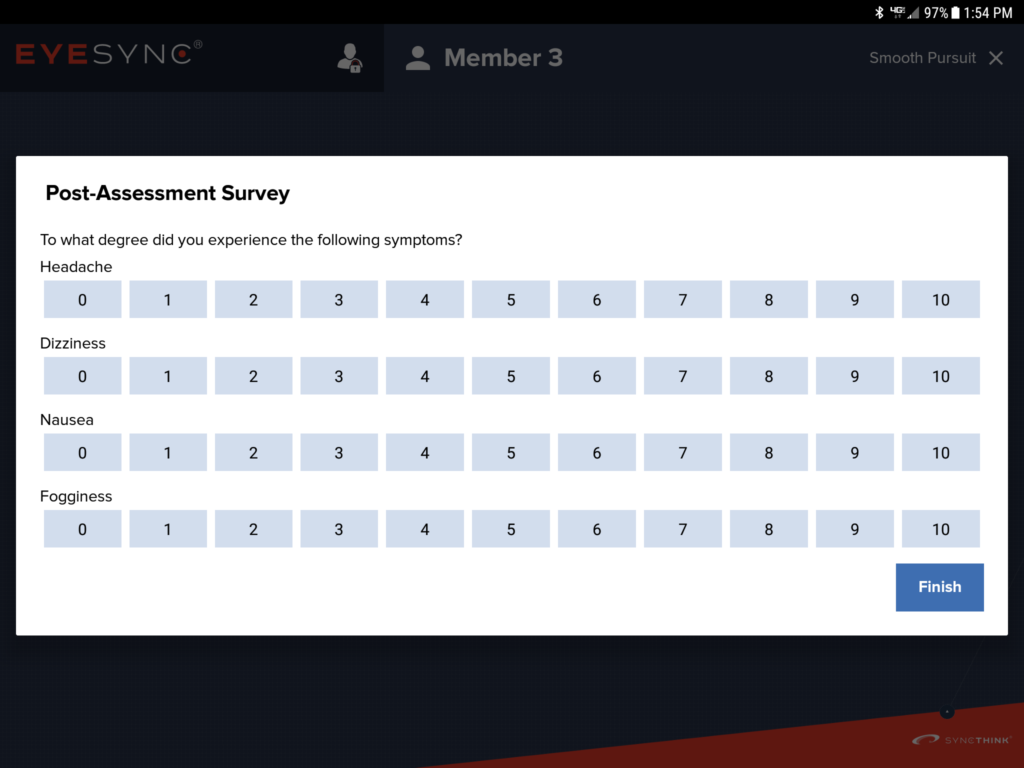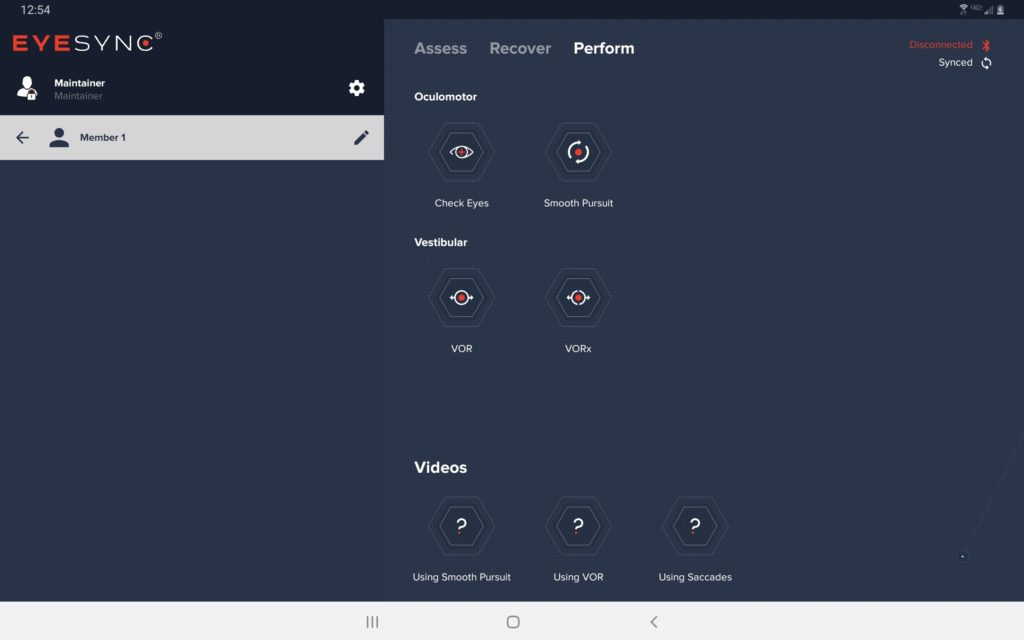Blog: EYE-SYNC Induced Brain Error Signal
What happens in the brain when you get an error signal and what is an error? The brain is a prediction machine and is always expecting sensory feedback from interactions. You expect correct feedback in both expected timing and spatial prediction.
Error in prediction
For example, you reach for a doorknob and expect the feeling of the knob at a certain time and position, otherwise you get an error signal- did someone open the door while you were reaching for the door knob? We certainly get a lot of error signals when we are learning something new. Learners in tennis frequently miss the ball and get error signals. The error is generated by expecting to hit the ball and not hitting it. This is how one learns- practice makes perfect. Repeating the activity over and over again adjusts the motor or cognitive function to produce no error, task learned.
Similarly, in eye-tracking synchronization, EYE-SYNC, the subject is trying to synchronize or predict the target position and move the eyes to foveate it. The eye can only focus on a very small area (the size of your thumbnail when your arm is stretched out), the fovea, and when a target is in motion or you are in motion trying to focus, the brain predicts the target position in relation to your position and moves the eyes to foveate. When the eye position is not on the target there is a disparity of where the eye is expected to be and where it actually is- creating the error signal.
Error signal
What does an error signal feel like? You are learning tennis and miss the ball. Maybe anxiety, irritation and headache initially and as you progress it disappears, only to reappear as your expectations increase- winning the game.
How do error signals in eye tracking feel? In the Vestibular-Ocular Reflex (VOR) one has to focus on a point while the head is moving. One has to predict one’s head position as it moves back and forth to move the eye predictively to foveate the target. Poor synchronization of the eye with the target will produce an error signal. The most common symptoms resulting from error signals are dizziness, nausea, headache and fogginess, which can be documented after the EYE-SYNC VOR in a symptom inventory, which serves to confirm error signals through provocation. Similarly, other eye tracking tests such as saccades, convergence, smooth pursuit and VOR cancellation produce similar symptoms when the eye position does not foveate the target.
Origin of error signals
What causes dizziness, nausea, headache and fogginess when there is poor synchronization of eye tracking? The cerebellum is the timer for the brain, some call it a co-incidence detector, which is another way to describe detecting the difference in what is expected and what occurs. The cerebellum output for errors is the amygdala (fear and anxiety center) and the prefrontal cortex including the anterior cingulate, which is a well known area for error detection.
What is causing the errors in eye tracking?
Impaired cerebellar connections with ocular-motor and vestibular brain stem nuclei function (Mallott et al, 2019) produce errors in eye-target prediction leading to abnormal VOR and other eye tracking tasks. Disruption of cerebellar-cortical connections can also produce cognitive dysmetria, or disruption in the synchronous coordination of cognitive capacities and produce problems in working and episodic memory, attention, reasoning, and timing. These impairments are described in the new subtype classification of concussion (Lumba-Brown et al, 2020).
How to reliably and objectively measure error reporting?
Combining a set of eye tracking tests that can provoke symptoms reliably and also accurately assesses error signals is imperative, rather than trying to have subjects track or move while focusing on targets that are unreliably produced by an examiner. An examiner waving a finger back and forth in changing visual environments will produce variable symptoms. The EYE-SYNC tests are done in a consistent VR visual environment with documentation of symptoms provoked by each assessment. The EYE-SYNC quick battery includes saccades, smooth pursuit, VOR and VOR cancellation and can be all be done in a few minutes with a reliable report on both symptoms and eye tracking performance.


How to retrain the brain and eliminate error signals?
The cerebellum is a known motor learning machine and recent evidence over the last 15 years point to its significant involvement also in cognitive functions (Hoche et al, 2018). The cerebellum detects timing errors and corrects through feedback. The “Perform” functions on the EYE-SYNC platform give the user’s eye position in real time as feedback during smooth pursuit, VOR, and VOR Cancellation tasks, enabling the user to correct for errors in real time.

In summary, brain error signals are generated when there is a prediction mismatch in visual and vestibular stimuli. EYE-SYNC provides objective prediction mismatch metrics and a reliable testing environment for symptom induction.